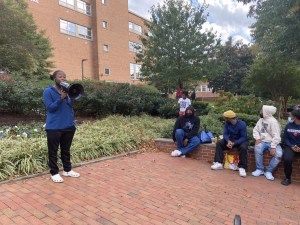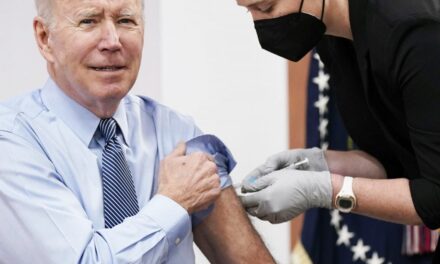By Imuetinyan Ugiagbe,
Special to the AFRO
When John Amanam’s brother lost a limb due to an accident, his family ordered a prosthesis from abroad, but to his surprise upon its arrival, it did not match his skin color. Amanam, a Nigerian native with a degree in rine and industrial arts, resolved to explore methods to craft a prosthetic covering that closely matched his brother’s brown skin type.
His aspiration to overcome a personal challenge has since transformed into a professional career as a prosthetic artist, making him the first African sculptor to specialize in the hyperrealism world of prostheses for people of African descent — a field that boosts the self-esteem of individuals who have experienced limb loss.
“I create flesh covers for people who’ve lost different body parts, ranging from ears, nose, fingers and breast forms,” said Amanam.
His objective is to offer individuals using his products a feeling of comfort in their own skin while simultaneously eradicating public scrutiny and stigma.
“It is important for comfort,” said Amanam. “When you go out there and you find out people are looking at your hand, possibly a White on a Black skin, it could cause discomfort.”
Alpha Sanusi, the president of International African American Prosthetic Orthotic Coalition (IAAPOC) said “there are significant health disparities in the United States and other countries, which disproportionately affect Black communities.”
“Having Black prosthetists can help address these disparities by providing specialized care to underserved populations and increasing access to prosthetic devices,” he continued. “Furthermore, representation in the field of prosthetics and orthotics matters and Black prosthetists should contribute to a more diverse and inclusive healthcare system. This helps to bridge the gap in racial disparities in access to healthcare services and ensures that patients from all backgrounds receive culturally sensitive care.”
Despite prostheses having a history spanning over 700 years, Amanam claims that he is the sole individual who places a high priority on the realism of each product, which he refers to as hyper-realism. He meticulously sculpts each item, guaranteeing that intricate features like veins and nails are prominently visible.
“Why I’m the first is not because there were no prostheses or flesh covers out there, but being hyper real is being unable to differentiate between what is real and what is artificial.
That makes it hyper real,” said Amanam. “You see veins, you see nails, you see almost exact resemblance when it comes to the design. There’s a difference between something being naturalistic and something being realistic. You could look at a leg and say, or a product that looks like a leg and say, yeah, this is a leg. But you could look at the fake leg and say, ah, this could [be real]. The difference is not being able to differentiate which one is real and which one is not real.”
Sanusi expresses Black prosthetist artists are essential in the healthcare space because they are better equipped to understand the unique cultural and social factors that may impact their patients’ experiences, based on the understanding of the unique challenges faced by black amputees.”
When Amanam founded his company, Immortal Cosmetic Art Ltd, he was filled with enthusiasm for the lives that he and his team would enrich. Amanam points out that his clients extend beyond Africans residing in Africa to include those living abroad. He emphasizes that the ability to address Africa’s challenges while choosing to remain in Nigeria brings him immense joy.
“My reward is the fact that I’ve been able to solve the needs of my people, which is Nigerians, Akwa Ibom, [the state] where I’m from, and also Africans, you know, and solving it from my continent. I’m not in Jamaica. I’m not in the US. I’m not in Europe. I’m in Nigeria and I’m solving the problems of Nigerians and Africans,” he said. “It gives me joy when I see clients. My clients are excited sharing testimonies. We don’t really talk more about clients for privacy. sake, but the responses we have from our clients are alarming and mind blowing. So I derive joy and I share it with my team when our clients are satisfied.”
Amanam points out that his main challenge right now is to meet demands from both his country and the rest of the world. One of his career goals is to expand his company and work industriously so his products can be available across Africa.
“One of our challenges at the moment is the fact that we want to go industrial. The demand is high. And we have a few hands,” Amanam told the AFRO. “The only thing we could do is to raise it from not just being a company, but to a level where we can go industrial, we could supply and meet the demands of as many African countries as we can.”
Amanam stresses the significance of Africa handling its own problems. He holds the view that it’s not the White Man’s duty to comprehend or be worried about the challenges facing Africa; rather, it’s Africa and Africans who should take the lead.
“It’s imperative that we as Africans try to look into our problems. Use our brains, our resources and find a way of solving our problem,” he said. “If the White man would solve your problem, he only did it to suit his own needs and his own profit, the African would do it to suit the African society.”
To promote greater representation of Black individuals in the prosthetics and orthotics field, IAAPOC is offering scholarships to support aspiring Black prosthetists and orthotists.
The post Transforming lives with hyper-realistic prostheses: The story of John Amanam, the first Nigerian prosthetic artist appeared first on AFRO American Newspapers .










